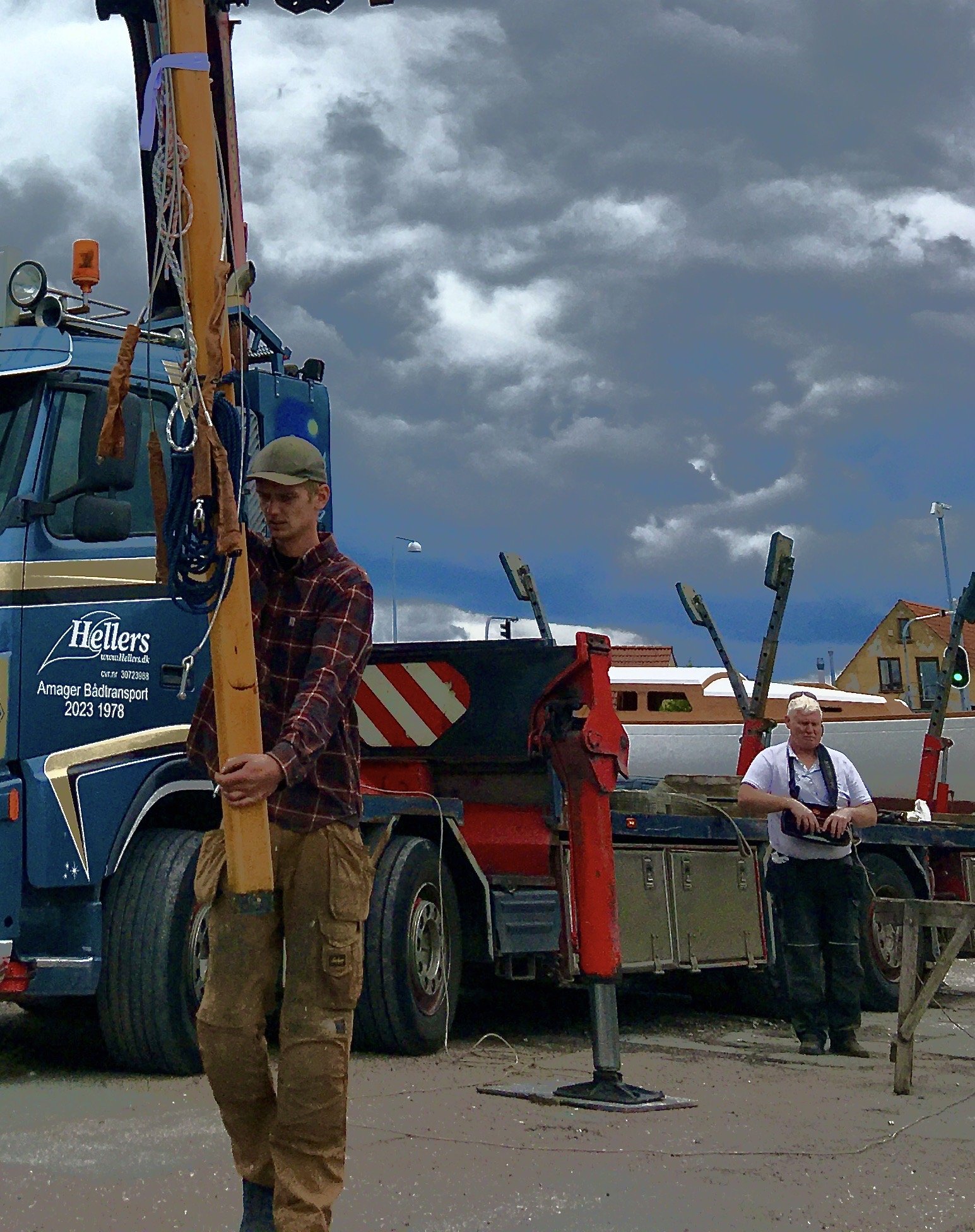The Coelan varnish lasted for 8 years but needed a refresh and makeover. However, it turned into much more than anticipated.
Thanks to Peter Heller og Robert Cilius Poulsen
-
About Peter Heller.
Since I didn't believe I could achieve a smooth finish on the vertical surfaces with Coelan, I decided to have the entire boat's deck, cabin, cockpit, and mast sprayed with Coelan varnish.
Peter Heller noted that the first time I applied Coelan, the layer had been too thin, so we decided to remove all the old Coelan and start over.
Additionally, the caulking, pulpit, grab rails, etc. were replaced by the skilled young boat builder Robert Cilius Poulsen, who is now working at a shipyard in Dragør. All the work was performed to a high standard.
If you're considering using Coelan, don't listen to rumors but instead, have a conversation with Peter Heller. In my opinion, Coelan is challenging to work with, but it's an excellent varnish that I will certainly recommend and use again. -
Screws Removed. Over 200 New Plugs Installed.
Preparing for the new varnish involves many tasks. For example, we inspected all the plugs. We chose to remove all the old screws to prevent them from bleeding through.
The windows were removed, and the acrylic glass was replaced.
-
Hatch Strips Repaired. Rot and Irregularities Removed.
When I removed the old Coelan varnish, there were subsequent damages to the Hatch strips because the varnish adhered so tightly.
There were also a few areas with rot that were removed, and new Hatch strips were installed. -
Damage Repaired.
When Nordbjærg's boat builders installed the stem fitting, they inserted a screw without pre-drilling, resulting in split wood. Furthermore, they installed the fitting with too little sealant, allowing water to penetrate.
We dried the area and glued the split.
-
Completely New Railing.
Replacing the railing/Toe-rail on a Knarr is a significant task, but boat builder Robert Cilius Poulsen replaced it with great confidence and high quality.
The original railing had become somewhat unsightly, but more importantly, many of the screws protruded through the wood, darkening it. It would have been a waste of effort to varnish another layer of Coelan without replacing the railing.
Thanks to Peter Hellers for insisting on its replacement. -
Stainless Steel Replacing Rusted Iron.
The forestay's iron fitting has been replaced with one of stainless steel. We had to remove it anyway to make room for changing the Samson post. One of those tasks that just gets done while you're at it.
-
New Samson Post
The old oak samson post has been replaced with a new one. Yet another assignment that easily accompanies the work when you're already in progress.
We have attached a stainless steel "service" sign to the end piece, primarily to protect the wood but also to inform interested passersby.
A strong magnet has also been embedded in the pulpit to hold the stern light. -
New Brass Strips Glued On.
The brass strips glued to the toe-rail are not the same as the original solution, but in my opinion, they were somewhat more elegant and neat. The strips were not screwed in place.
-
New Grab Rails.
The existing grab rails were undoubtedly undersized, perhaps a result of too many sandings over time.
I collaborated with boat builder Robert C. Poulsen to have completely new ones made. -
The Visible Planks in the Cockpit.
Old varnish removed and painted with Coelan.
The visible part of the interior topsides in the cockpit had always looked somewhat dull. I've always postponed working on it because it's really challenging to remove the old varnish in this area. But Peter Heller insisted it had to be done, and I'm thankful for that persistance.
-
Newly Renovated Mast.
One of the areas where Coelan varnish really shines is on the mast.
The mast can be challenging to keep free of dents, and it's also difficult to achieve a good varnish result when there are so many parts to varnish around.
We removed all the old varnish and started from scratch.
Check the setup in which the mast is placed. It allows for spray varnishing all sides almost non-stop. -
Sueded and leathered Details.
It's not a necessity to use suede on a wooden boat, but it elevates the overall appearance. Here, suede protects the boom from scratches.
We've also made leather shroud protectors and covered the part of the forward mooring lines that come into contact with the boat's toe-rail. This protects against wear on the mooring lines.
Let time stand still, just for a moment
Because it's in those moments that we are truly present. Working on DIVA in the surroundings that Heller's shipyard offers, and sailing DIVA, calls for one's presence. Quite a fantastic experience.
See the pictures below of the finished result, the atmosphere of the shipyard, and the surroundings of the shipyard. Not too bad, huh?




























